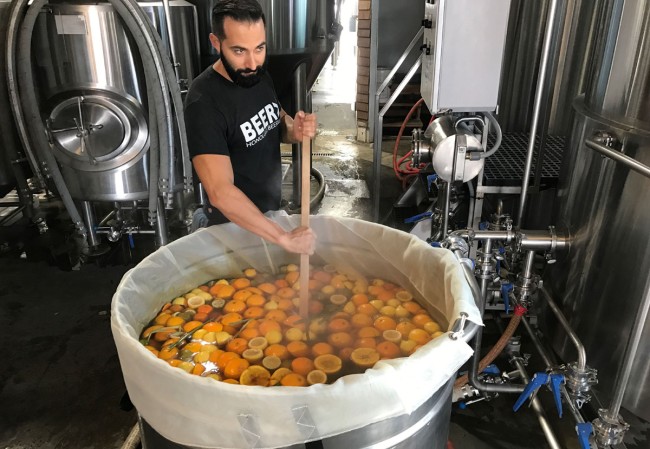Why To Try a “Craft” Beer

By Mark Wilson
Now as the title mentions this article is for those who don’t drink “craft” beer, or for that matter beer at all. I will not state that by the end you will like craft beer (from here on no quotations and we will just call it beer), but I do hope to open your mind to trying some styles of beer that you may not have tried yet.
When I hear someone say they don’t like beer my normal response is, “Which ones have you tried?” and many of the answers I receive are a list of American Pilsners and American Light Lagers. I am not here to bad mouth Miller Lite, Bud Light or the like, but let me say they are simply one style of beer and many people who don’t like craft beers do like one of these.
Perhaps you don’t like craft beer because you have tried one or two beers recommended by a friend or someone you know who loves craft beer, and these are often the ones at the very edge of the scale. I must say I really like most of the beers all the way at the edge, however there are multitudes of beers that fall much closer to the center that are awesome and deserve a shot.
Now before I can talk too much about beer styles we need two things: a list of styles to try and some of the vocabulary for describing beers. In defining styles, there are several criteria to choose from but for this article we will use the BJCP (Beer Judge Certification Program) list from 2008.
In the BJCP 2008 there are 23 recognized styles. Many have subcategories, with a total of 79 styles which include #23 Specialty Beers. I’m using the 2008 guide because in 2014 it was redone, which added many more styles and to be honest, I’m less familiar with them.
Second, we need the vocabulary. There are characteristics we won’t get into in this article such as clarity, color, and lacing. These are all important in judging a beer but not as much for tasting. There are four characteristics I’m going to use to describe the styles of beer. There are two more I’m going to define and I’ll start with those.
Carbonation: The level of CO2 in a beer can change the way you perceive its taste. Higher carbonation will cut the sweetness some and add that tingly feeling in your mouth while lower carbonation will tend to make a beer feel smoother.
Mouth feel: This can range from watery to thick, chewy or viscous.
The four characteristics that I’m using are Sweet, Bitter, Fruity, and Malty. These come from John Palmer’s beer spectrum, which can be found at:
This spectrum involves two scales. The first scale is Sweet to Bitter. Sweetness comes mostly from non-fermented sugars in the malts although in some cases it is added separately and can come from candy sugar, lactose or other sweeteners.
Bitterness as we will define it here comes primarily from hops added to the beer in the early stages of the boil (I’m not going to get too far into when and how, if you are interested in learning to brew stop by a Homebrew club and check them out). At this point I should also note that hops add a lot of flavor to beer and depending on where in the process they can add much of it without adding bitterness.
The second scale is Fruity to Malty. Most fruity flavor comes from hops and yeast but can also come from juice or other flavorings. Malty comes almost exclusively from the grains and how they are prepared and there are techniques to get more of that flavor in the beer.
The five styles I want to describe fall in each of the four corners and the middle of the spectrum. They are Barley Wine, English brown, Belgian triple, Altbier, and Kolsch.

19c American Barley Wine:
A Barley Wine has a reasonably high ABV (Alcohol By Volume) and ages well. It falls in the sweet and fruity corner has a full bodied mouthful and alcohol warmth.
11c Northern English Brown:
Is in the malty and sweet corner and often has notes of toffee and caramel.
18c Belgian Triple:
Also a higher ABV beer which falls in the fruity and bitter corner has a medium body and mouth feel and should be a marriage of spicy fruity and alcohol with esters reminiscent of citrus fruit with a dry finish.
7a Northern German Altbier:
This one falls in the bitter and malty corner and is fairly bitter yet balanced by a smooth sometimes sweet malt character.
6c Kolsch:
Falling towards the center of our scale, Kolsch is a balanced beer with a delicate flavor with medium bitterness and a slight malty flavor and should be smooth and crisp.
As mentioned before these are just 5 of 79 styles but they represent some of the range of flavors you can find in beer. If you have tried “craft” beer and found it too bitter, or too thick, thought that it was too sweet or too dark, consider trying different styles and if all else fails find a craft beer buddy to help navigate these waters with you. There is an amazing array of beer out there to try. Drink up!
































You must be logged in to post a comment Login